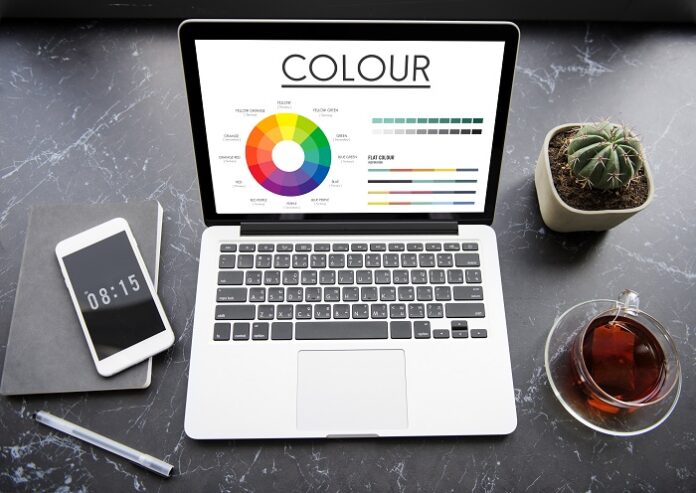In the vast digital landscape, where millions of websites vie for attention, every element of design plays a crucial role in captivating and engaging visitors. Among these elements, color stands out as a powerful tool that can influence emotions, perceptions, and behaviors. Understanding the psychology of color in web design is not merely about selecting aesthetically pleasing hues; it’s about strategically leveraging colors to evoke specific responses and create memorable experiences for users.
Color psychology delves into the impact different colors have on human cognition and emotions. It explores how individuals perceive and react to colors based on cultural, personal, and contextual factors. In the realm of web design, mastering color psychology empowers designers to effectively communicate brand messaging, enhance user experience, and drive desired actions.
The Influence of Color on Perception and Emotion
Colors possess innate associations and symbolism that shape the way people perceive content and interact with websites. Consider the following examples:
1. Red:
- Red elicits strong emotions such as passion, excitement, and urgency. It’s often used to attract importance to necessary elements like notifications and buttons. But, increased application of red can evoke feelings of aggression or danger.
2. Blue:
- Blue conveys a sense of trust, stability, and professionalism. It’s commonly employed by brands in finance, healthcare, and technology to instill confidence and reliability. Blue is also associated with tranquility, making it suitable for websites promoting relaxation or serenity.
3. Yellow:
- Yellow is synonymous with energy, optimism, and warmth. It’s an attention-grabbing color that can stimulate creativity and foster a sense of happiness. Brands seeking to convey friendliness or innovation often incorporate yellow into their designs.
4. Green:
- Green symbolizes nature, growth, and harmony. It’s frequently used by environmentally-conscious brands and those in the health and wellness industry. Green can also evoke feelings of prosperity and freshness, making it appealing for websites related to finance or organic products.
5. Purple:
- Purple is associated with luxury, creativity, and spirituality. It’s often utilized by brands aiming to evoke a sense of sophistication or uniqueness. Purple can also signify mystery or imagination, making it suitable for artistic or imaginative endeavors.
6. Orange:
- Orange radiates energy, enthusiasm, and warmth. It’s a vibrant color that commands attention and encourages action. Brands looking to convey a sense of playfulness or vitality often incorporate orange into their designs.
Applying Color Psychology in Web Design
Incorporating color psychology into web design involves more than selecting favorite shades or following trends. It requires a deep understanding of the target audience, brand identity, and intended message. Here’s how designers can effectively apply color psychology to create compelling digital experiences:
1. Understand Your Audience:
- Before selecting colors for a website, it’s essential to research and understand the preferences, demographics, and cultural backgrounds of the target audience. Different demographics may respond differently to certain colors, so tailoring the color palette to align with audience preferences is crucial.
2. Reflect Brand Identity:
- Colors play a pivotal role in brand identity, conveying the personality, values, and positioning of a brand. When choosing colors for a website, designers should ensure consistency with the brand’s existing color palette and visual identity. This cohesion fosters brand recognition and strengthens brand association.
3. Create Visual Hierarchy:
- Strategic use of color can guide users’ attention and create a clear visual hierarchy on the website. Designers can use contrasting colors to highlight important elements such as calls-to-action, navigation menus, and key messages. This helps users navigate the site more effectively and encourages desired interactions.
4. Enhance User Experience:
- Colors can significantly impact user experience by influencing readability, comprehension, and overall engagement. Designers should consider factors such as color contrast, text legibility, and color combinations to ensure a pleasant and accessible browsing experience for all users, including those with visual impairments.
5. Evoke Desired Emotions:
- By strategically selecting colors that align with the intended emotional response, designers can evoke specific feelings and associations in users. Whether aiming to create a sense of trust, excitement, or relaxation, choosing the right colors can enhance the overall emotional impact of the website and strengthen its connection with the audience.
Case Studies: Successful Implementation of Color Psychology in Web Design
1. [Branding Services] – Redesigning a Financial Institution’s Website:
- A leading financial institution sought to revamp its website to convey trustworthiness and modernity while maintaining its established brand identity. By incorporating shades of blue and green, symbolizing stability and growth, respectively, the redesigned website achieved a balance of professionalism and approachability. Calls-to-action were highlighted in contrasting colors to encourage user engagement, resulting in a significant increase in conversion rates.
2. [Branding Case Studies] – Launching an E-commerce Platform for Health and Wellness Products:
- An emerging e-commerce brand specializing in health and wellness products aimed to establish a vibrant and uplifting online presence. Leveraging the energizing properties of yellow and orange, the website design exuded positivity and vitality, resonating with the target audience’s desire for holistic well-being. The use of warm tones and inviting imagery created a welcoming atmosphere, driving customer engagement and fostering brand loyalty.
In conclusion, the psychology of color plays a fundamental role in shaping user perceptions, emotions, and behaviors in web design. By understanding the nuances of color psychology and applying strategic color choices, designers can create captivating and impactful digital experiences that leave a lasting impression on users. From reflecting brand identity to evoking desired emotions, color psychology empowers designers to craft websites that not only look visually appealing but also resonate deeply with their audience.





